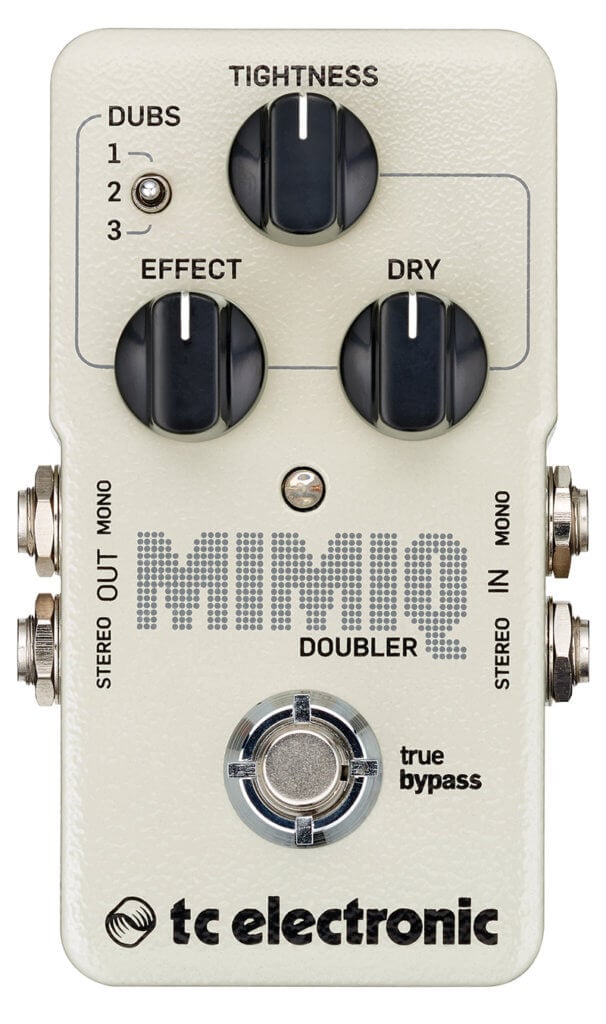The TC Electronic Mimiq Doubler Pedal might be just the tool you’ve been looking for, if you want to beef up your band’s guitar assault.
PROS: Plenty of tonal options when used in stereo, priced right, easy to use.
CONS: In mono applications, feels a little lacking.
PRICE: $129
Double tracking parts isn’t a new concept, but modern metal bands perfected it in the 1990s, and it’s been a standard practice in the studio for decades. Bringing that huge sound to a live situation, though, was tough. The new Mimiq Doubler pedal from TC Electronic can now easily bring that wall of guitar sound to any amp, without all the fuss.
Its overall concept is an algorithm that incorporates a varying delay and modulation that gives the effect of more than one guitar. It’s a standard pedal size, with a selector to choose between 1, 2 or 3 “overdubs,” while the tightness control sets the accuracy of the algorithm. In the low settings, it’s hyper tight, and when cranked up, really spreads out. The dry and effect controls balance out the effected signal to the direct guitar sound. With stereo ins and outs it can work in effects loops, as well as in front of an amp easily.
Using it in mono mode, it adds a little bit of depth, and there’s a feeling of a quick, tight delay. It doesn’t feel like much, but when turning it off, it’s easy to realize it does add a bit more, but we’d say the effect is a bit too subtle to be worth the effort.

TC Electronic Mimiq Doubler
In stereo mode, however, it is amazing. Testing it through a pair of Fender Hot Rod Deluxes and an Ampeg GVT52-112, it really came to life, with a stereo image that was instantly massive. Using it with a couple of “mismatched” amps like a ZT Lunchbox, and a Boss Katana, can make the differences in the various amps really add to the feel of a multi-tracked rig. Even better is adding a couple of overdrive pedals after the Mimiq, before the amps, which can truly open up a lot of tonal options.
Using it in a recording setting, plugging it into a DAW running some amp simulator plug-ins in stereo is fantastic. It can thicken up tracking, without using a lot of processor power, or overloading the session with multiple guitar tracks. Even as a splitter, send one output to an amp that’s mic’d up, and the other output to a DAW, either for re-amping or into an amp sim; it’s a great tool for the studio and a no-brainer to beef up guitar parts on-the-fly with very little time, effort or expense.
Now it’s not just for getting a heavy guitar sound either, using it on clean tones can add snap and sparkle to almost any sound.
A lot of traveling bands may not have the space for a stereo guitar rig in their van, but this could make them re-think that. In the studio, the Mimiq is flat-out excellent (and dare we say, essential). If guitarists don’t flock to it, anyone looking to get massive multi-layered sounds in the studio on the cheap should get one of these before their next session.
